AZTR receives NYSE delisting warning over equity requirement
Viridien SA (NASDAQ:VIRI) presented its Q2 and H1 2025 financial results on July 31, 2025, highlighting solid performance across its segments despite volatile oil prices. The company reported 6% year-over-year growth in Q2 segment revenue and reaffirmed its full-year net cash flow target of approximately $100 million.
Quarterly Performance Highlights
Viridien reported Q2 2025 segment revenues of $274 million, representing a 6% increase compared to the same period last year. Segment adjusted EBITDA showed even stronger growth, rising 14% year-over-year to $107 million. The company generated $30 million in net cash flow during the quarter, helping to offset the negative cash flow reported in Q1.
As shown in the company’s executive summary, Viridien continues to strengthen its market positions across all segments while maintaining its financial outlook:
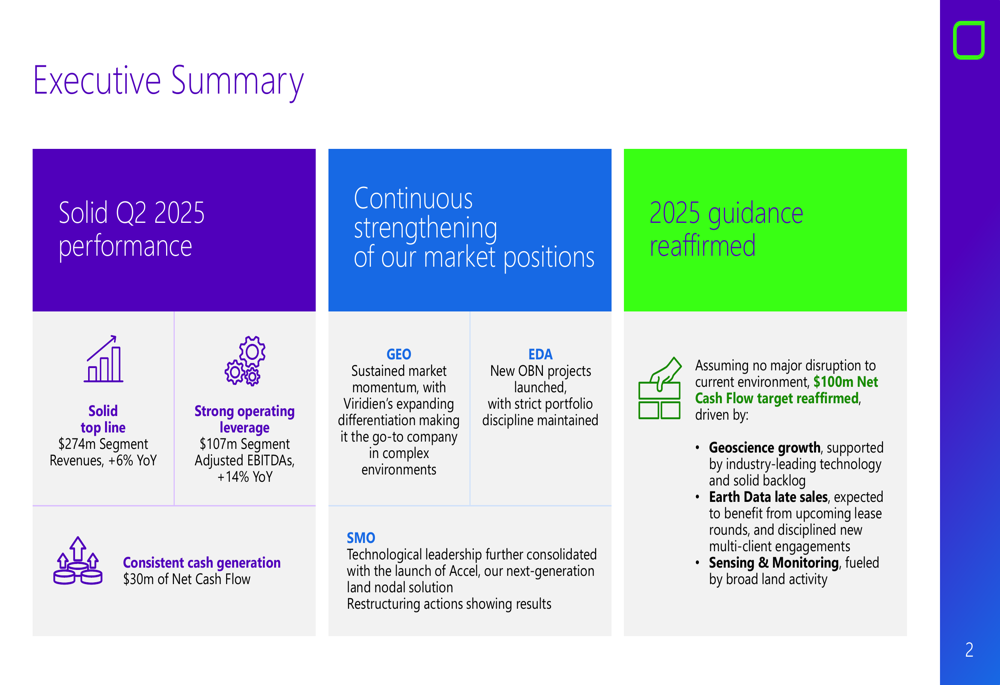
For the first half of 2025, segment revenue increased by 8% year-over-year, driven primarily by strong performance in the Geoscience and Sensing & Monitoring segments. Segment adjusted EBITDA for H1 2025 rose by 25%, with margins improving by approximately 590 basis points.
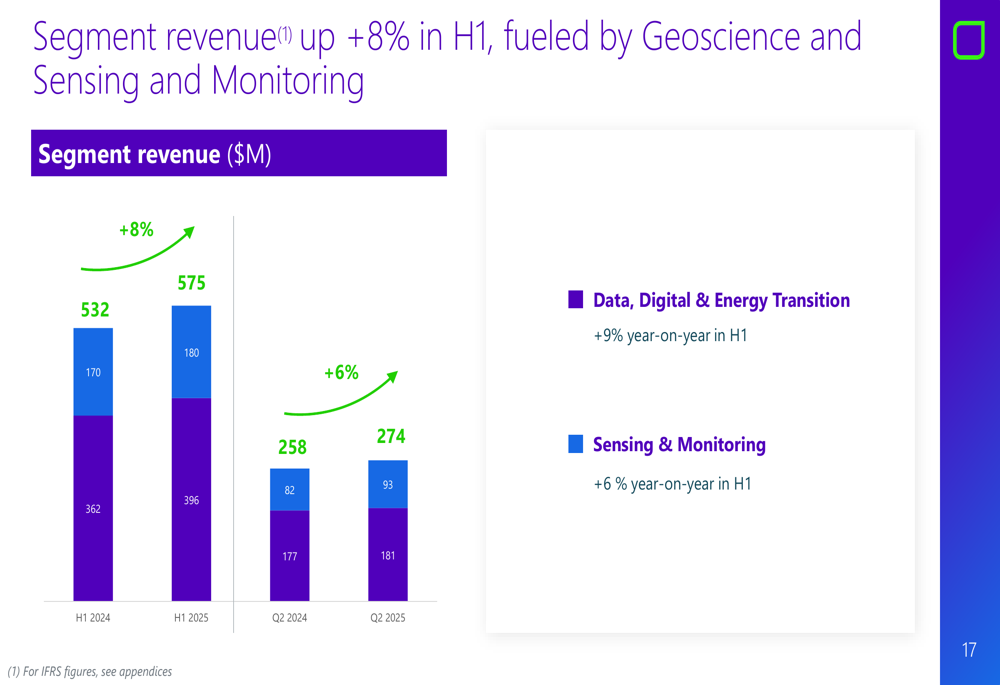
The improved profitability is evident in the segment adjusted EBITDA performance, which shows significant margin expansion in both the Data, Digital & Energy Transition segment and the Sensing & Monitoring segment:
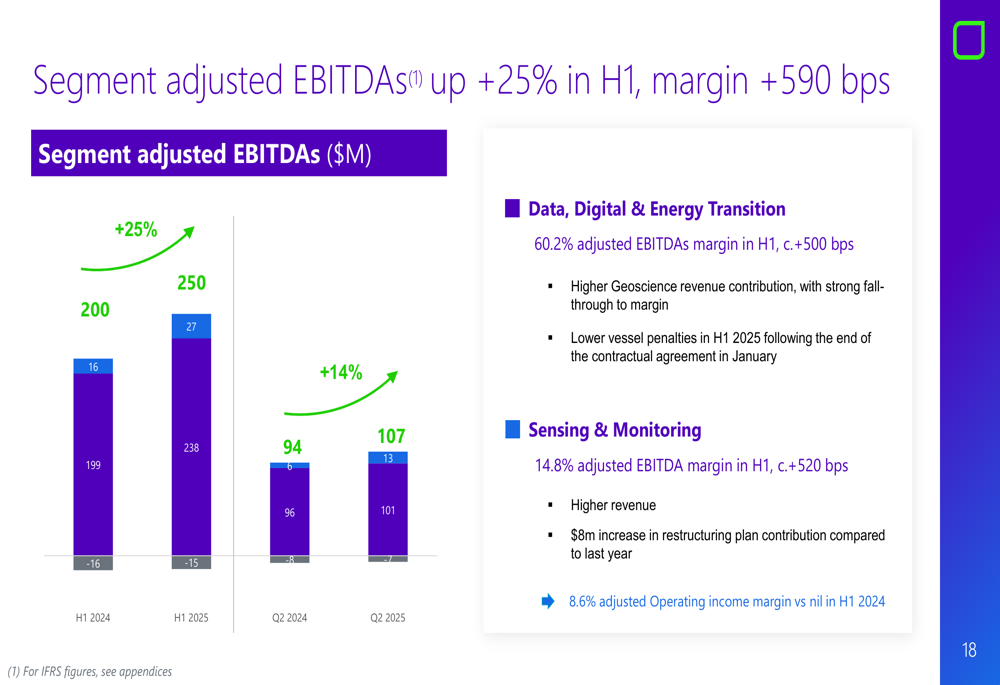
Segment Analysis
Geoscience
The Geoscience segment continued to demonstrate strong business momentum, with H1 2025 revenue reaching $226 million, a 17% increase from H1 2024. The segment’s backlog grew to $317 million as of June 30, 2025, compared to $246 million a year earlier, indicating robust future business prospects.
The following chart illustrates the consistent growth in Geoscience revenue and backlog:
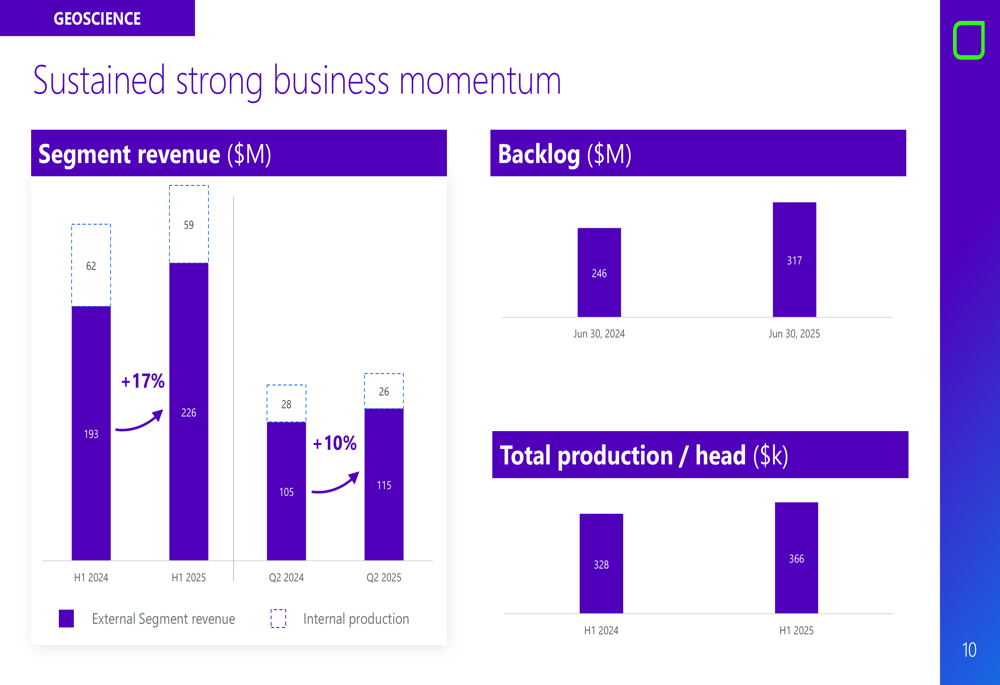
Viridien highlighted its technological leadership in Geoscience, noting that it employs over 300 PhDs in mathematics, physics, and geoscience, and operates approximately 600 petaflops of AI-powered computing capacity. This technological advantage has enabled the company to deliver massive OBN (Ocean Bottom Node) interpretation projects and extract AI-driven geological insights from seismic data.
Earth Data
The Earth Data segment showed resilience despite oil price volatility, with H1 2025 revenue of $170 million, a modest 1% increase year-over-year. However, Q2 2025 revenue declined by 8% to $66 million compared to the same period last year.
The company’s Earth Data library maintained a net book value of $508 million as of June 30, 2025, with a balanced distribution by age and geography:

Viridien emphasized its strategic approach to Earth Data investments, balancing internal financing with partnerships depending on the type of project and associated risk profile. The company highlighted its leading position in the Brazilian equatorial margin, noting strong interest from Petrobras and confirmed industry appetite.
Sensing & Monitoring
The Sensing & Monitoring segment displayed contrasting performance between its Land and Marine subsegments. Land revenue surged by 99% in Q2 2025 to $57 million, while Marine revenue declined by 50% to $21 million during the same period.
The following chart illustrates this divergent performance:
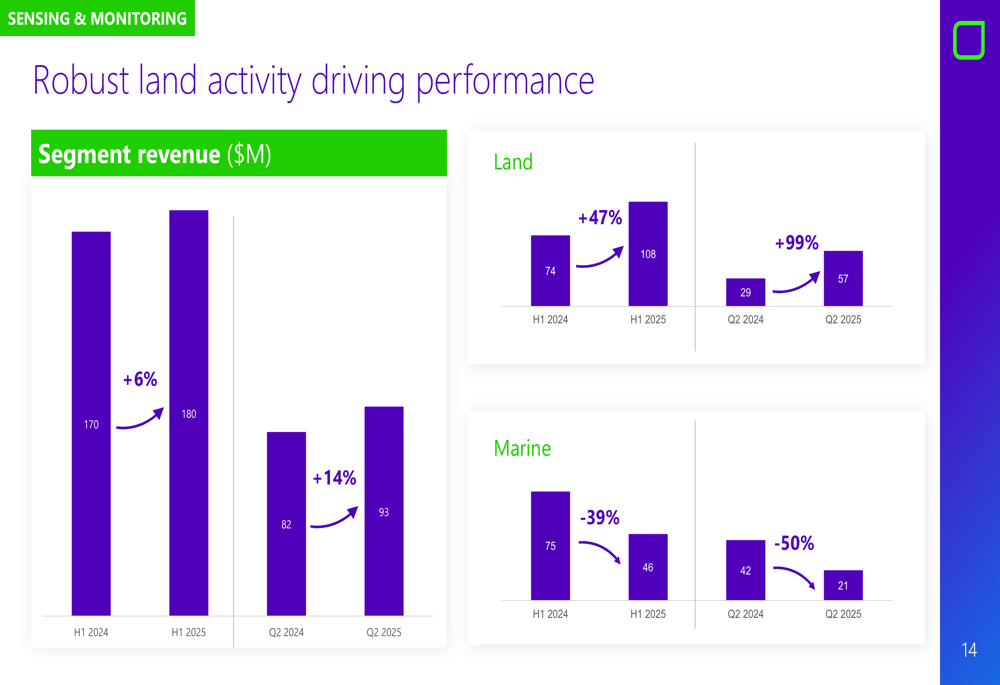
A key development in this segment was the launch of Accel land nodes, which the company claims are engineered to boost operational performance in desert areas and high-productivity surveys. According to Viridien, these nodes are more compact than competitive offerings and can reduce operating expenses by up to 30%.
Financial Position and Cash Flow
Viridien reported positive net cash flow of $10 million for H1 2025, with Q2 contributing $30 million. This represents an improvement from Q1 2025, when the company reported negative cash flow of $20 million according to its previous earnings release.
The following bridge chart shows the components affecting the H1 2025 net cash flow:
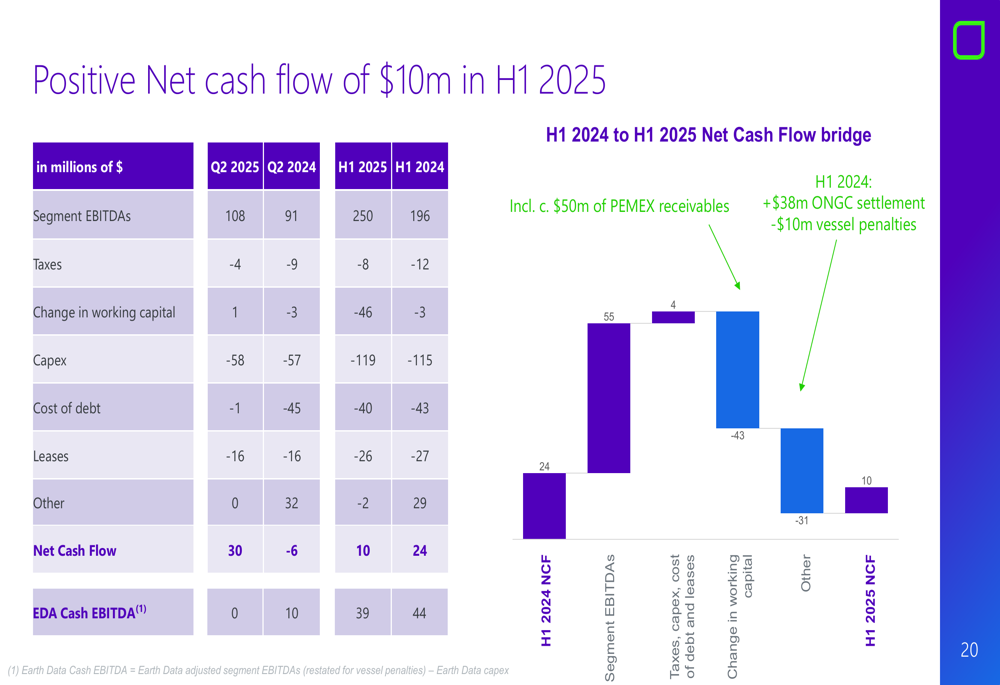
The company’s financial position includes $162 million in cash and $100 million in undrawn revolving credit facilities, providing total liquidity of $262 million. Gross debt stands at $1,158 million, resulting in net debt of $997 million. This represents a slight increase from the $1,120 million gross debt reported at the end of Q1 2025.
Viridien completed a refinancing operation during the period, extending its debt maturity profile through the issuance of new senior secured notes totaling approximately $925 million.
Strategic Initiatives and Outlook
Viridien continues to implement its strategy focused on three pillars: driving core growth, developing new markets, and delivering performance excellence. The company is increasingly focused on asset-lighter, higher value-added segments of the seismic value chain, emphasizing equipment and solutions supply, multi-client data licensing, and subsurface imaging while de-emphasizing data acquisition.
Despite volatile oil prices in recent months, Viridien noted that prices have consistently remained above the $60/bbl threshold, which is generally considered an industry equilibrium level. Oil and gas companies have maintained most of their exploration and development commitments, particularly in Viridien’s core segments.
Based on these market conditions and assuming no major disruptions to the current environment, Viridien reaffirmed its financial objective of generating approximately $100 million in net cash flow for the full year 2025. This guidance is consistent with the outlook provided in the company’s Q1 2025 earnings report.
Viridien’s stock closed at $58.40 on July 31, 2025, down 0.09% for the day. The stock has traded between $31.84 and $78.73 over the past 52 weeks, suggesting significant volatility despite the company’s relatively stable operational performance.
Full presentation:
This article was generated with the support of AI and reviewed by an editor. For more information see our T&C.
